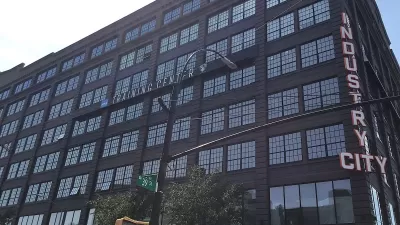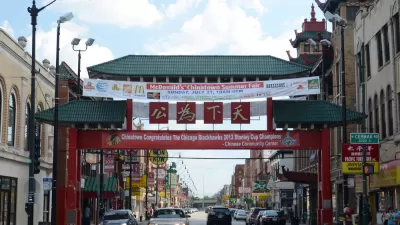The editors of a new book on displacement in New York argue that the city's historical record of exclusionary zoning carries over into the present. Urbanist concepts in vogue today simply rehash old divides.

"If were going to be a sanctuary city—that has to include being a place where people can afford to live." So argues Sylvia Morse, a NYC housing advocate and co-editor of Zoned Out! alongside planning professor Tom Angotti. In an interview, the two draw harsh conclusions about the city's housing and zoning policy.
Their argument: modern forms of inequality have systemic roots and need to be dealt with as such. "Zoning is a systemic policy to protect neighborhoods that are predominantly white and homeowner neighborhoods—the whiteness is more important than home ownership, actually. [...] If policies are not explicitly anti-racist, then they are perpetuating racism."
Moore and Angotti argue that many of today's urbanist buzzwords like "underutilized" land, transit-oriented development, mixed-use, and even "density" can mask profit- or even race-related displacement. Lacking a comprehensive plan, NYC's zoning remains a hyper-local affair, perpetuating these problems.
Says Morse, "We see a lot of that happening now, where if people are living in poverty, and if those people are people of color, their neighborhoods are immediately labeled as needing a certain kind of investment. Rather than that investment in social programs, that investment comes in the form of subsidies for developers that are going to make a ton of private profit."
FULL STORY: New York City Has Been Zoned to Segregate

Maui's Vacation Rental Debate Turns Ugly
Verbal attacks, misinformation campaigns and fistfights plague a high-stakes debate to convert thousands of vacation rentals into long-term housing.

Planetizen Federal Action Tracker
A weekly monitor of how Trump’s orders and actions are impacting planners and planning in America.

In Urban Planning, AI Prompting Could be the New Design Thinking
Creativity has long been key to great urban design. What if we see AI as our new creative partner?

Pedestrian Deaths Drop, Remain Twice as High as in 2009
Fatalities declined by 4 percent in 2024, but the U.S. is still nowhere close to ‘Vision Zero.’

King County Supportive Housing Program Offers Hope for Unhoused Residents
The county is taking a ‘Housing First’ approach that prioritizes getting people into housing, then offering wraparound supportive services.

Researchers Use AI to Get Clearer Picture of US Housing
Analysts are using artificial intelligence to supercharge their research by allowing them to comb through data faster. Though these AI tools can be error prone, they save time and housing researchers are optimistic about the future.
Urban Design for Planners 1: Software Tools
This six-course series explores essential urban design concepts using open source software and equips planners with the tools they need to participate fully in the urban design process.
Planning for Universal Design
Learn the tools for implementing Universal Design in planning regulations.
planning NEXT
Appalachian Highlands Housing Partners
Mpact (founded as Rail~Volution)
City of Camden Redevelopment Agency
City of Astoria
City of Portland
City of Laramie





























